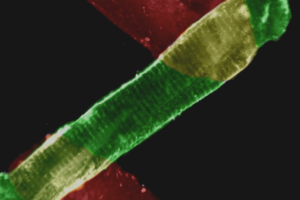IonOptix’ FloAcq acquisition and recording module provides real-time indicators of arterial flow dynamics. The endothelial response to flow-induced stress (e.g., the generation and secretion of nitric oxide) is an important modulator of vascular tone and function, linking vasodilation and constriction to the dynamics of fluid flow. IonWizard’s FloAcq acquisition module is the first to perform real-time calculations of important indicators of arterial flow, including shear stress. By acquiring the raw flow rate and inlet and outlet pressures from your myograph system, along with dimensioning outputs from our VesAcq software, FloAcq calculates and reports the following values:
- Mean pressure
- Flow velocity
- Vessel wall shear stress – a characterization of the frictional drag exerted on arterial walls during flow. Many physiological functions are influenced and promoted by this biomechanical force. Normal levels of shear stress serve to maintain wall physiology. High shear stress triggers vascular dilation in order to regulate the mechanical forces exerted on arterial walls.
- Vascular resistance – a definition of the force opposing the movement of solution through a vessel. It is inversely related to the vessel diameter. A greater vascular resistance will require a greater degree of vasodilation in order to maintain constant pressure within the vessel.
- Reynolds number (Re) – describes whether the flow is either turbulent or laminar. A large Re suggests turbulence, where nonaxial flow instabilities such as vortices result from high flow volume, high temperature, high flow velocity, branch points, etc. At low Re , where flow is dominated by viscous forces, laminar flow will move in parallel velocities throughout the lumen of the vessel.
Note: This product is intended for research purposes only. It is not certified for clinical applications (including diagnostic purposes). Use of this product in uncertified applications is in violation of FDA regulations.






